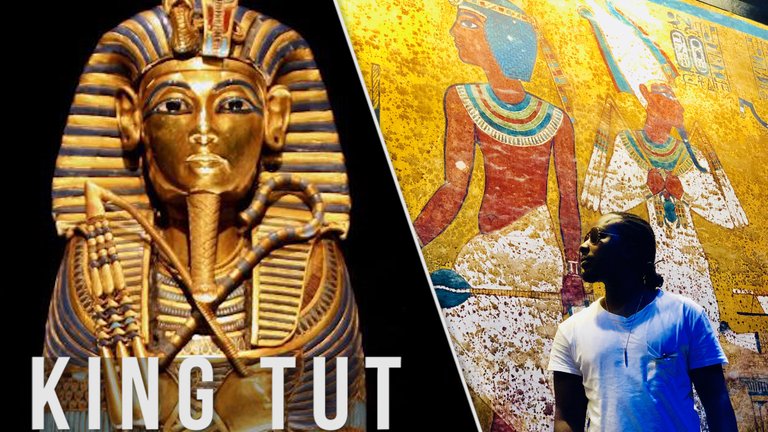
Ancient Egypt has always fascinated me - it’s so interesting to learn more about the sacred traditions and the way of life thousands of years ago.
When I heard that the King Tut exhibition was in town, I absolutely had to see it!
Hundreds of ancient, original artifacts directly from a tom that’s several thousand years old - how amazing!
The exhibition is taking a world tour after its start in southern california - and I encourage everyone to see it if egyptian culture is interesting to you.

About Tutankhamun
Tutankhamun (or Tutankhamen) was the king of ancient Egypt (reigned 1333–23 BCE).
Today, he is mostly famous for his tomb, which was discovered in 1922 and gave the archaeologists a complete insight into the life and traditions in ancient egypt.
After the death of his father, Pharaoh Akhenaten, he ascended to the throne at only 9 years old.
Since he was so young, advisors of the royal family took care of most matters until he got a little more experience.
Later on, Tutankhamen then started restoring some of the religious temples his father had destroyed in his delusional worship of the sun god Aten, and reversed some of his fathers rules.
He wanted to restore balance with Egypt and its people.
Then, after a 10-year reign, Tutankhamen died unexpectedly at the age of 19.
Later on, Malaria parasites were found in his mummified remains and it was revealed that traditional inbreeding might also be one of the main causes to Tutankhamun’s poor health and early death. His parents appear to be siblings, and his wife was also his half-sister.
Tutankhamun had a frail stature, with a bone disease in his left foot which is the reason why he’s depicted seating in most activities.

About the KING TUT exhibition
The current „King Tut“ exhibition that we saw is the largest one ever toured - it features over 150 original artifacts from King Tut’s tomb, 60 of which are exclusive and have never been shown outside of egypt.
In a dramatic new presentation, dazzling multimedia complements rare artifacts to take guests on an immersive journey of the pharaoh’s quest for immortality. Examine exquisite rings found on King Tut’s fingers, opulent jewelry that adorned his body, and the gold sandals placed on his feet upon burial. Discover how the scientific analysis of King Tut’s 3,300-year-old mummy has revealed new information about his health and lineage, and how cutting-edge technologies have played a role in discovering new tombs and analyzing existing ones in ways never before imagined.
To celebrate the 100-year anniversary of the discovery of the tomb, these artifacts will tour around the world for the last time before remaining in Egypt.
When King Tut died at the age of 19, his body was mummified, organs removed, and placed in a series of 8 nested containers - and his tomb prepared him for success in his afterlife .
Besides the actual mummy and sacophargus, the tomb revealed over 5,000 artifacts - including furniture, chariots, clothes, jewelry, statues, pottery, and sacrificial offerings.
Take a look at some of the artifacts from the exhibition below!
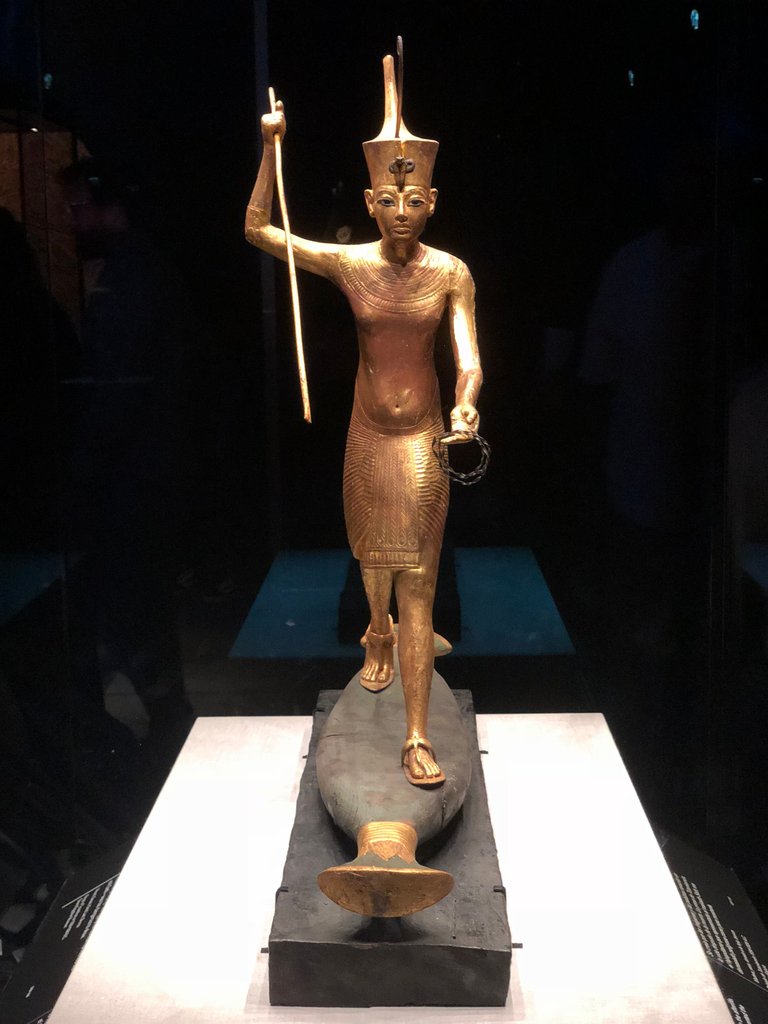

Gilded wooden figure of Tutankhamun on a skiff, throwing harpoon
Images and words were believed to come alive in the afterlife. Tutankhamun's prey - the hippotamus that represented the evil Seth - was too dangerous to show.
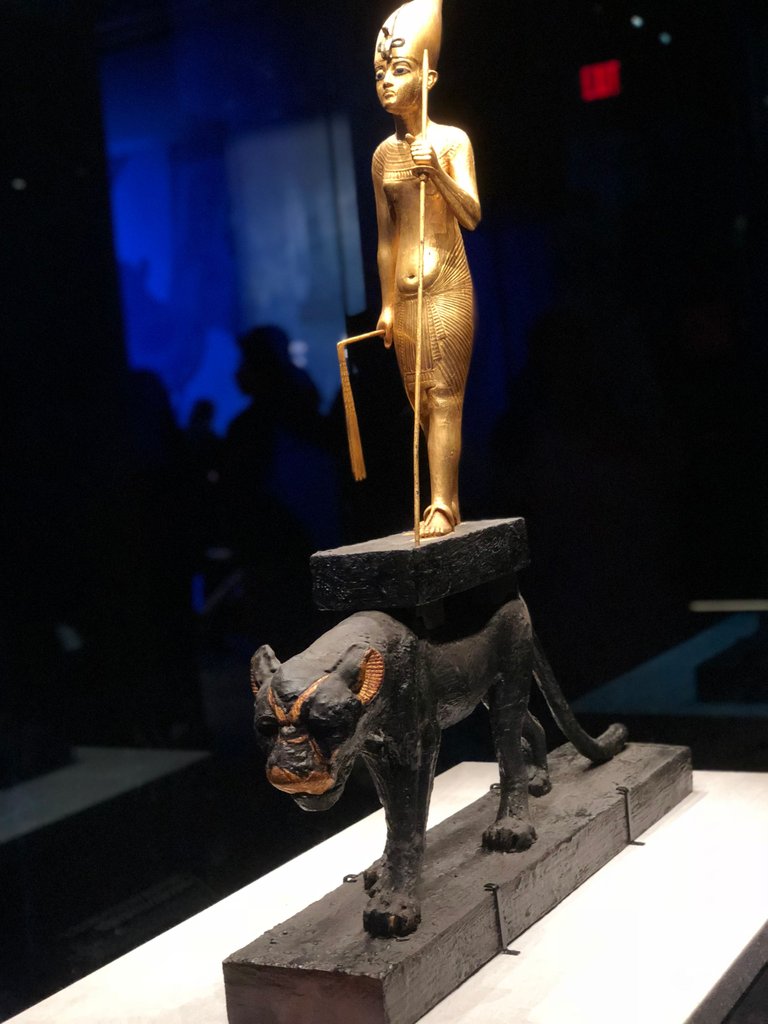

Gilded wooden statuette of Tutankhamun riding a black varnished panther
The king's ability to dominate the panther is clear. He carries Tutankhamun to safety through the nocturnal darkness of the Netherworld.
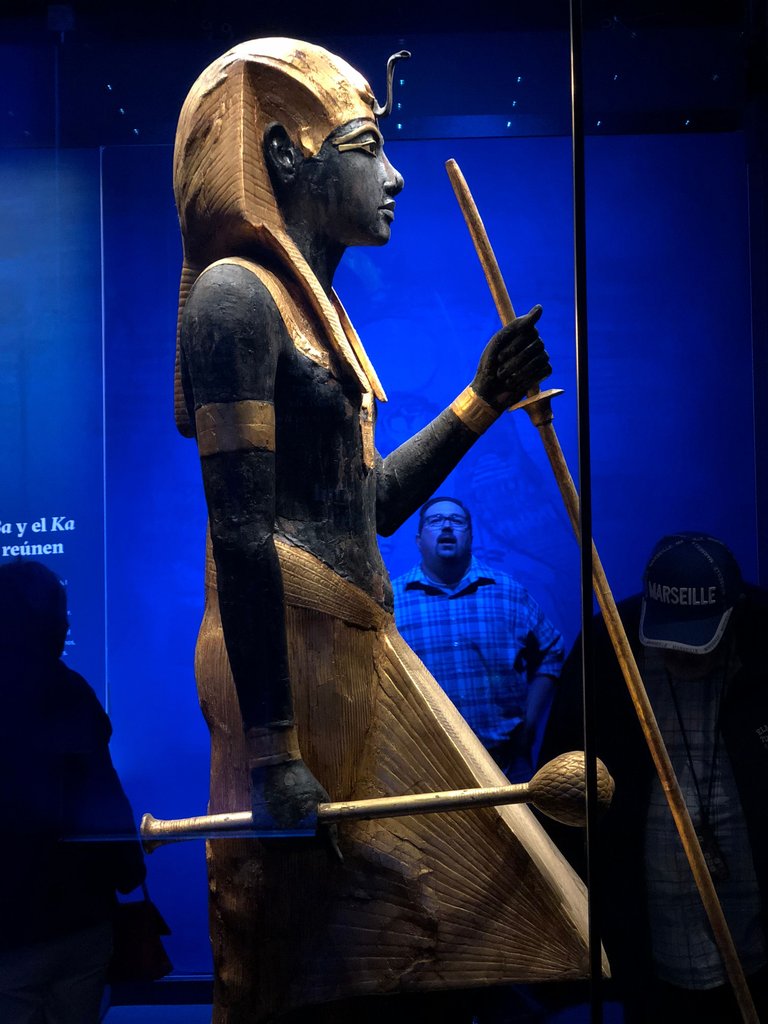
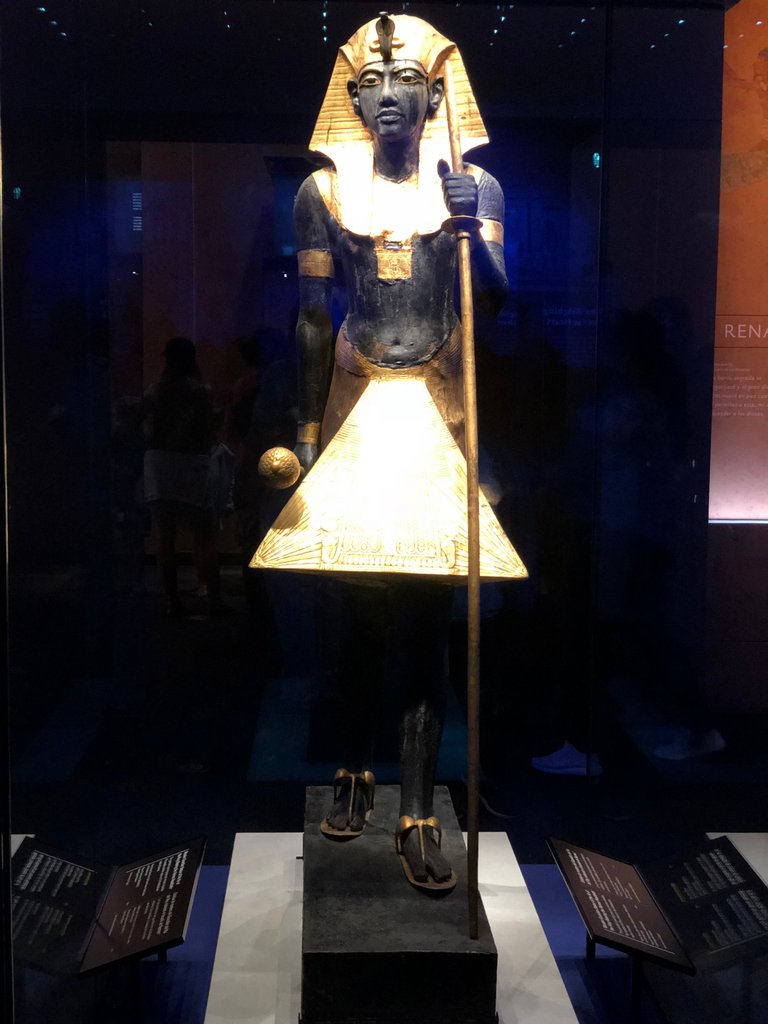

Wooden guardian statue of the Ka of the king wearing the Nemes headcloth
The guardian's piercing eyes are volcanic obsidian. His sandals and the uraeus on his forehead are made of bronze.
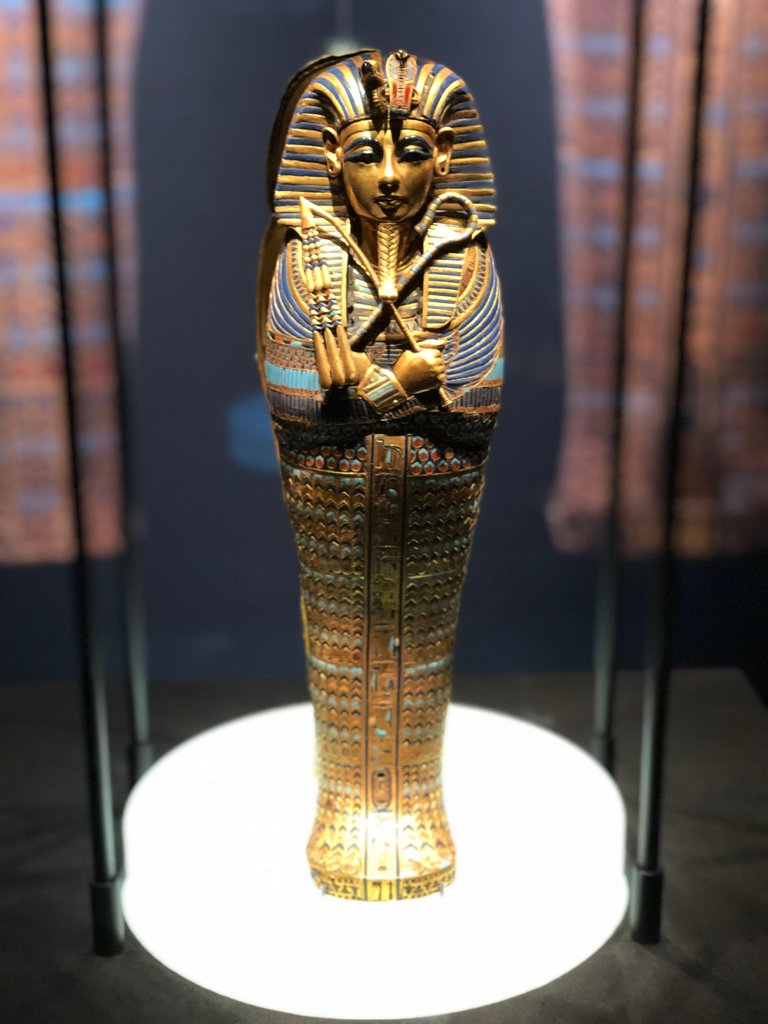
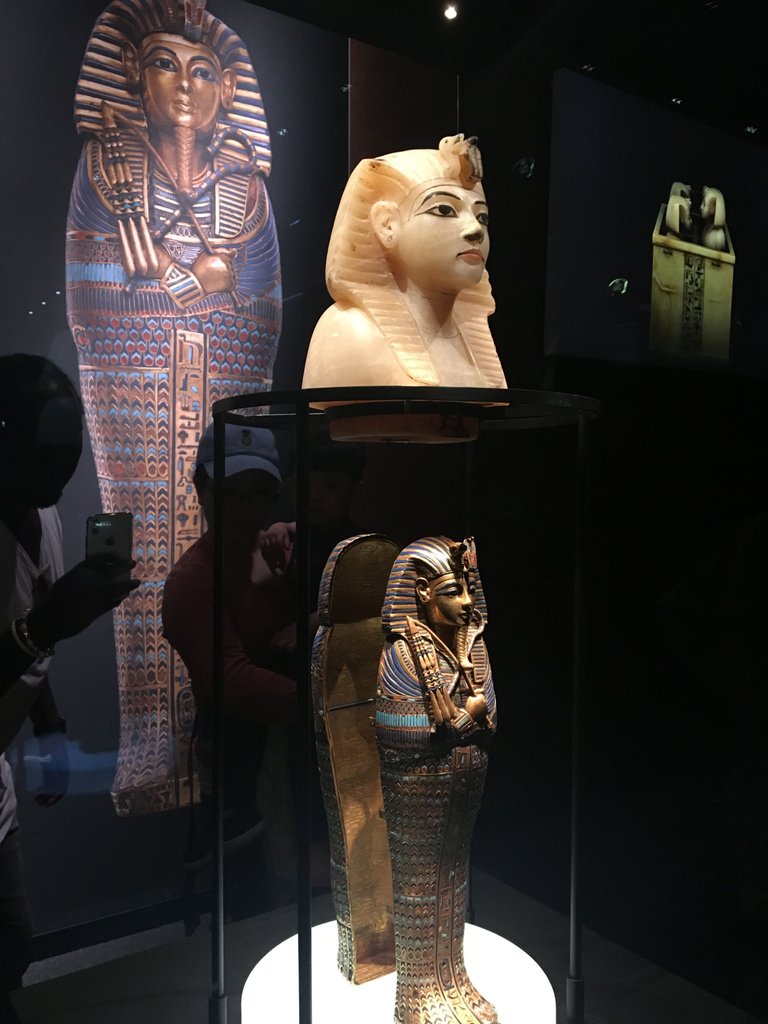
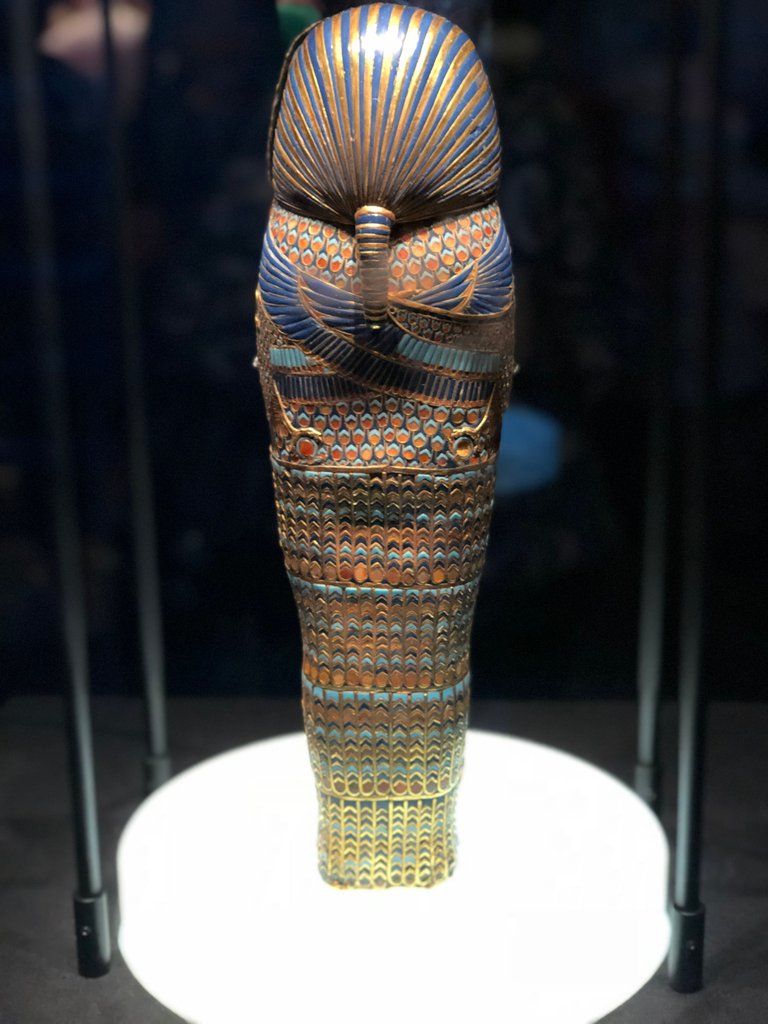
Gold inlaid canopic coffinette of Tutankhamun dedicated to Imseti and Isis
The king's viscera were protected by the 4 sons of Horus, each paired with a canopic goddess. Imseti and Isis guarded the liver. This is also the main artifact that is featured on the "King Tut" promotion material because it's a great example of the intricate details and dedication of egyptian craftsmanship.



Golden embellishments outside of the sarcophagus
The original sarcophagus parts, for example the famous headdress, have to stay in Egypt due to the fragility.
That's why the museum created the black mockup version of the sarcophagus, with the original gold pieces outside.
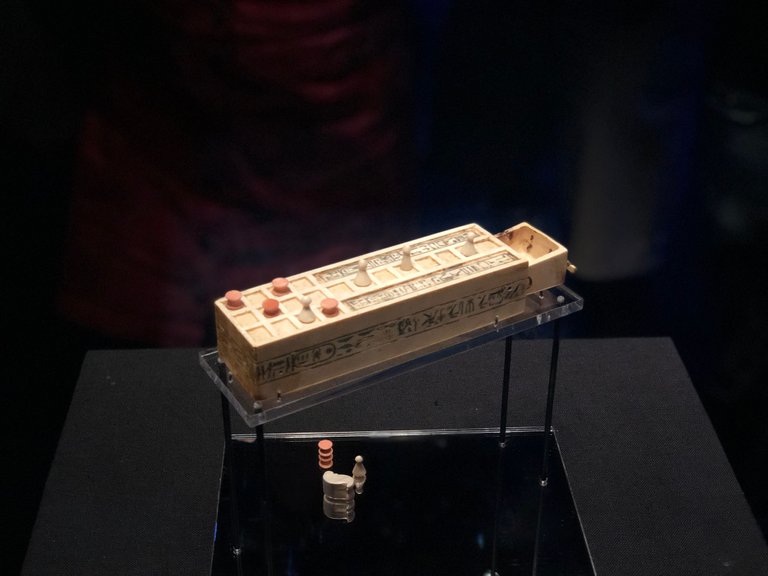
Ancient Egyptian Board Game "Senet"
Senet means “passing” and had a religious significance – the aim of each player being to move their pieces around the board and avoiding hazards. Good luck was a blessing from the gods and the winner was the first to pass into the afterlife by getting all their pieces off the board.
Tutankhamun's wishing cup in the form of an open lotus and 2 buds
"Shaped like an open lotus blossom with Heh, god of eternity, on each handle, the wishing cup is a powerful symbol of rebirth and eternal life."
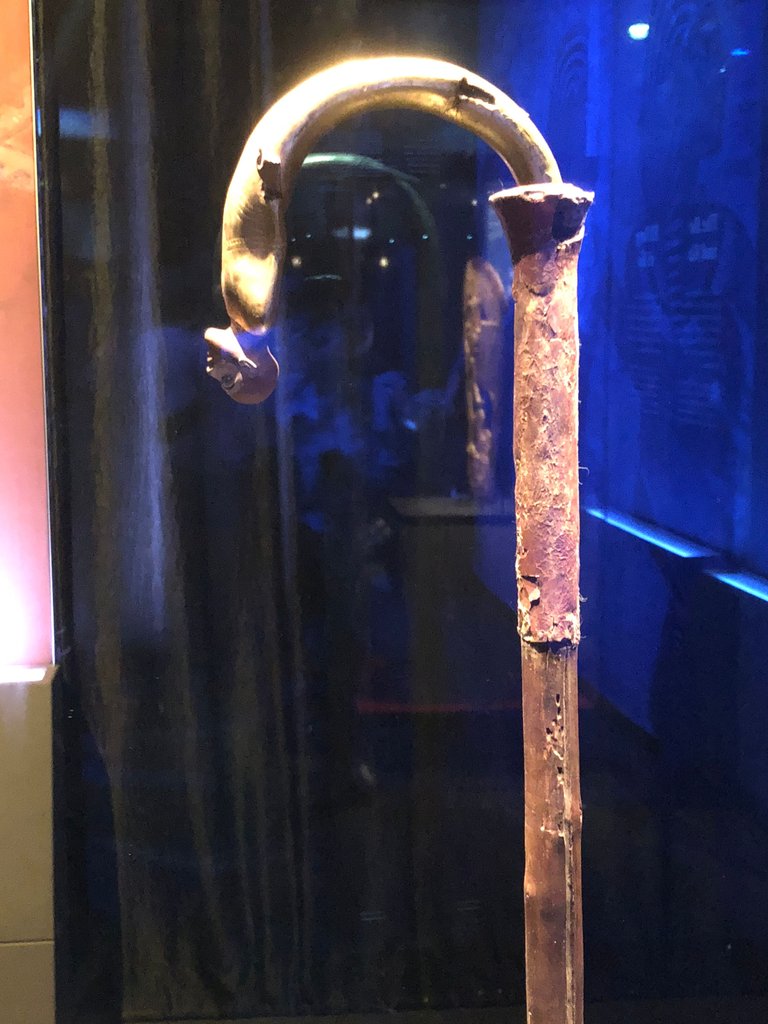
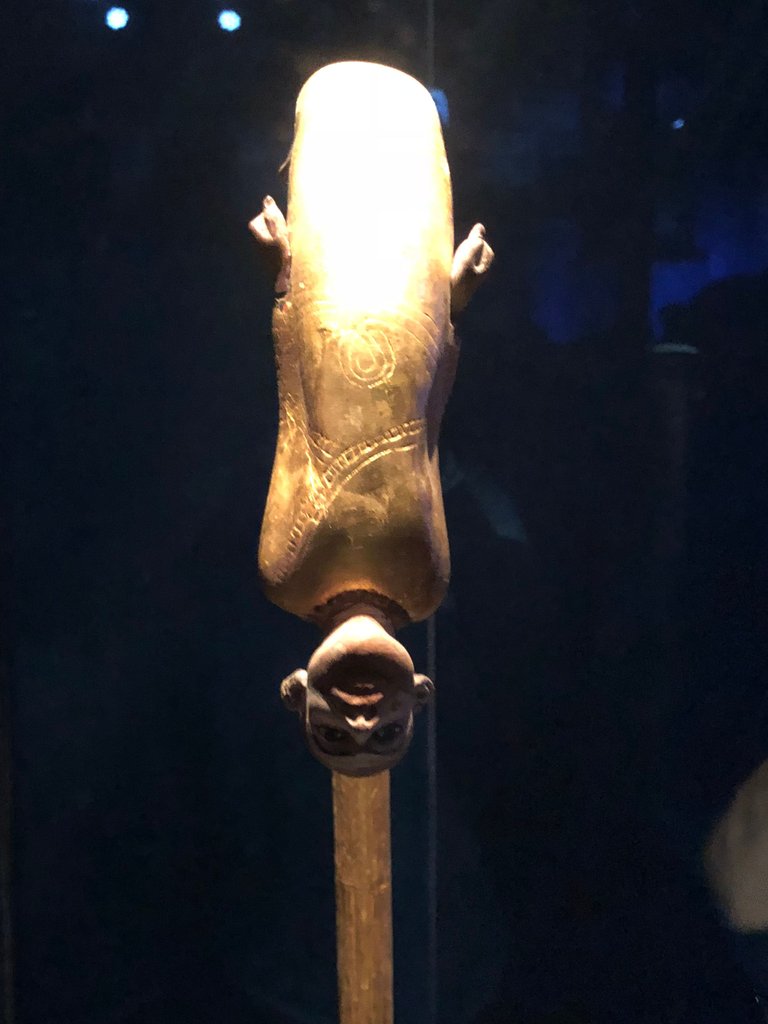
Walking sticks:
Since Tutankhamun had a lame foot, the remainings of his tomb also featured a large collection of walking sticks - like this one, with a carved figure at the top.
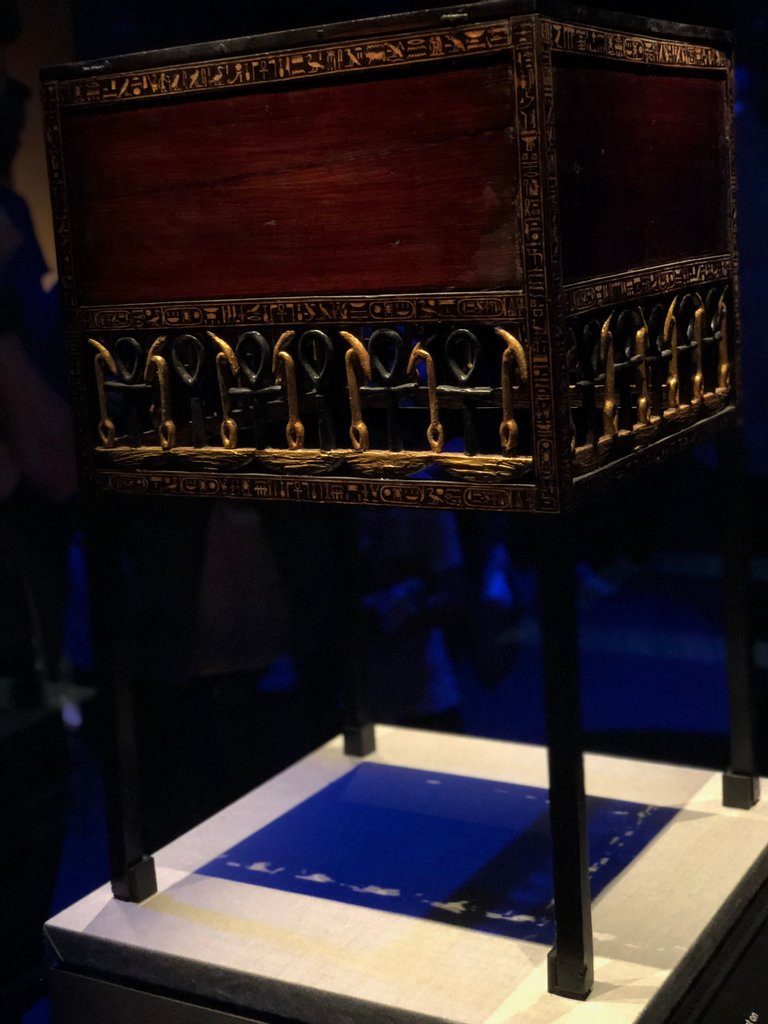 Traveling chest
Traveling chest
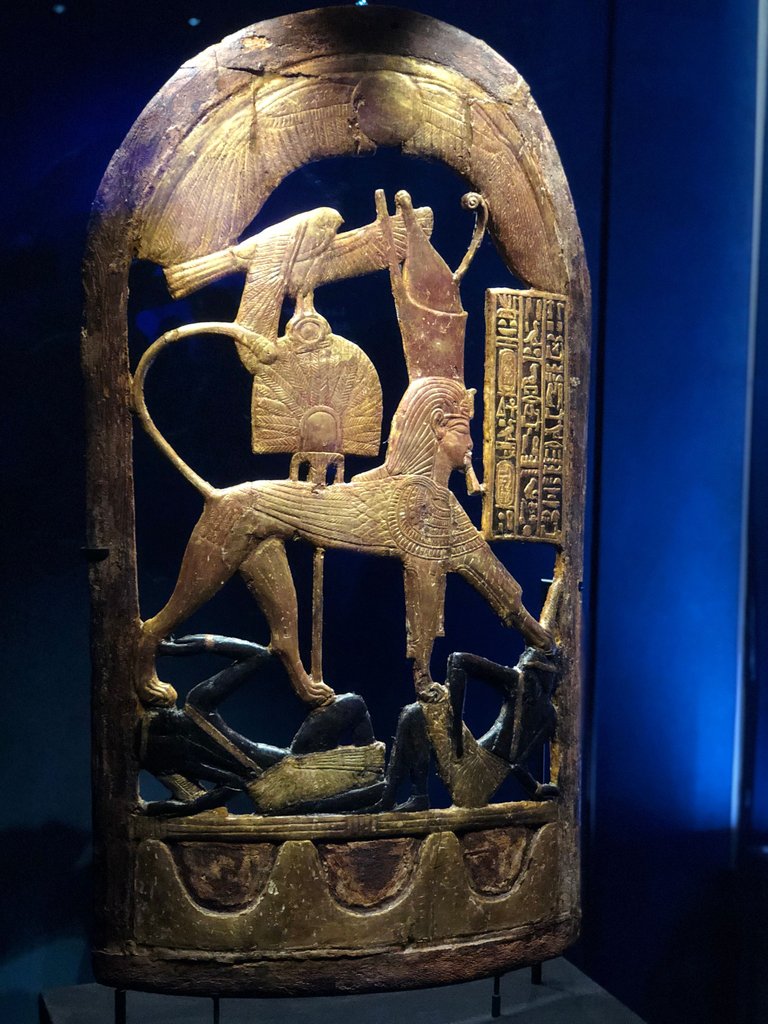 Gilded wooden shield with Tutankhamun wearing an Atef crown and slaying Lions
Gilded wooden shield with Tutankhamun wearing an Atef crown and slaying Lions
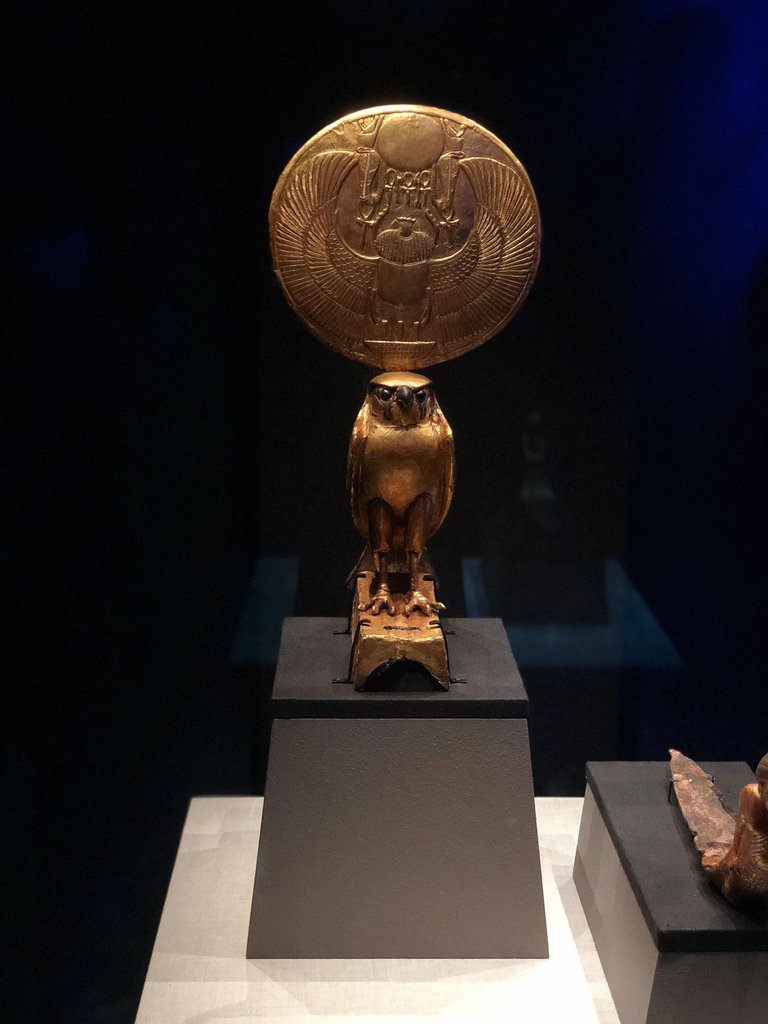
Solar Hawk Horus Figure
This gilded wooden hawk with a sun disk on its head was fitted over the center pole, part of the decoration of a chariot that celebrates Tutankhamun's victory over his enemies.
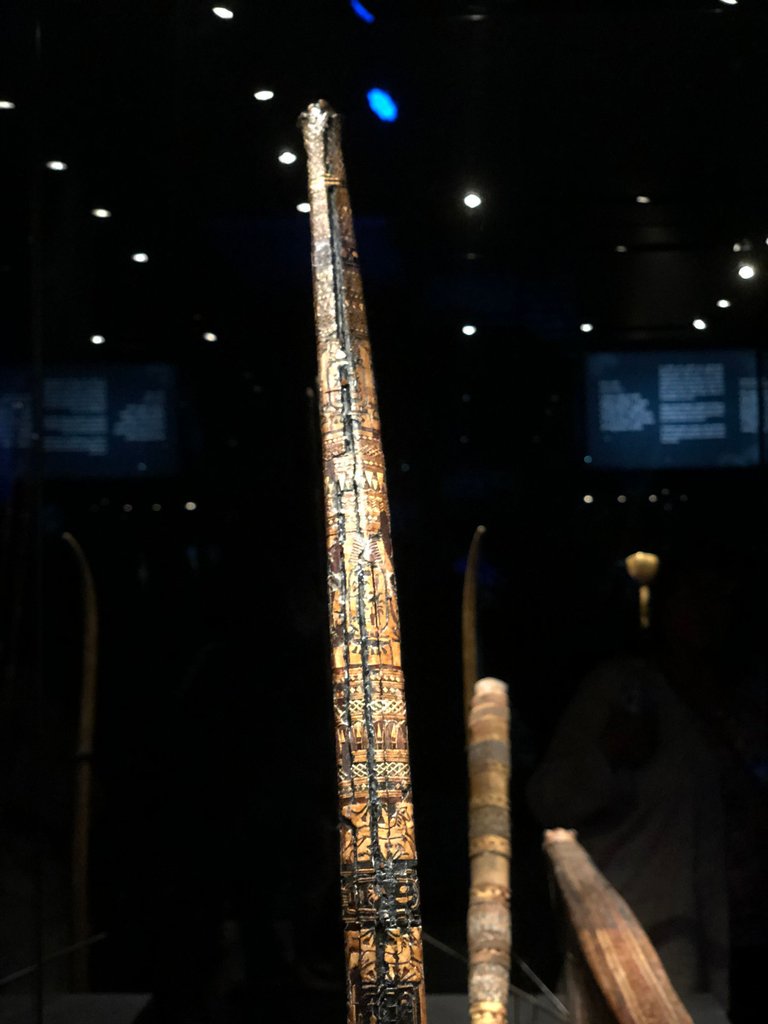
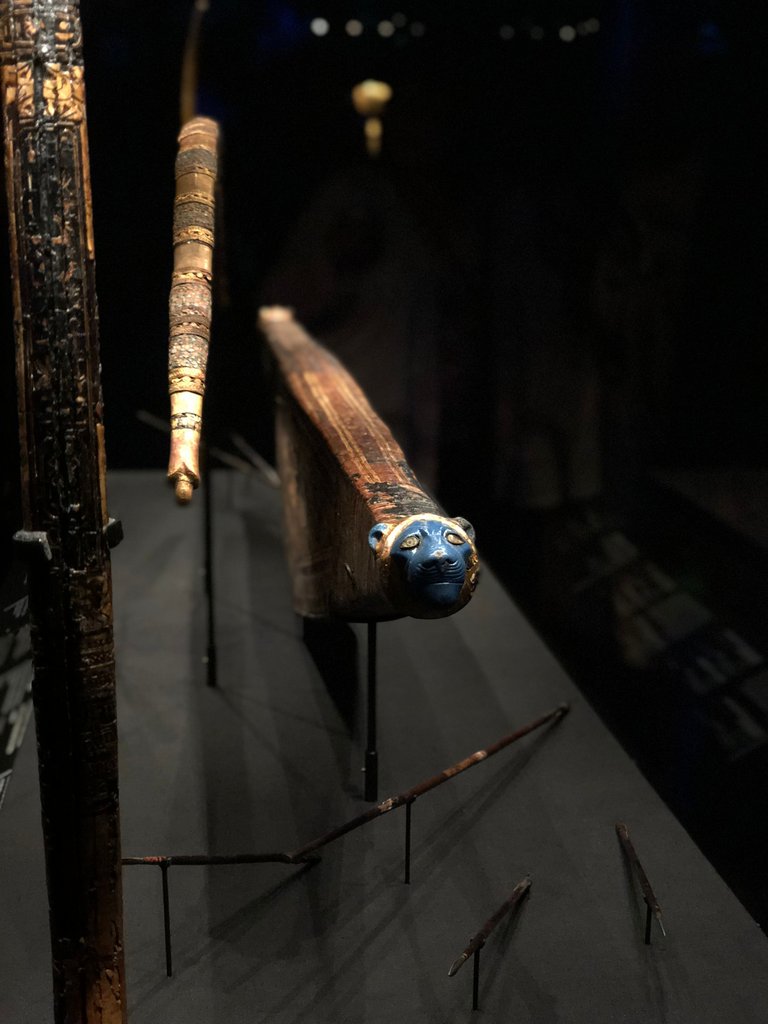
Ancient archery set with engraved symbols and stories of tutankhamun's battles
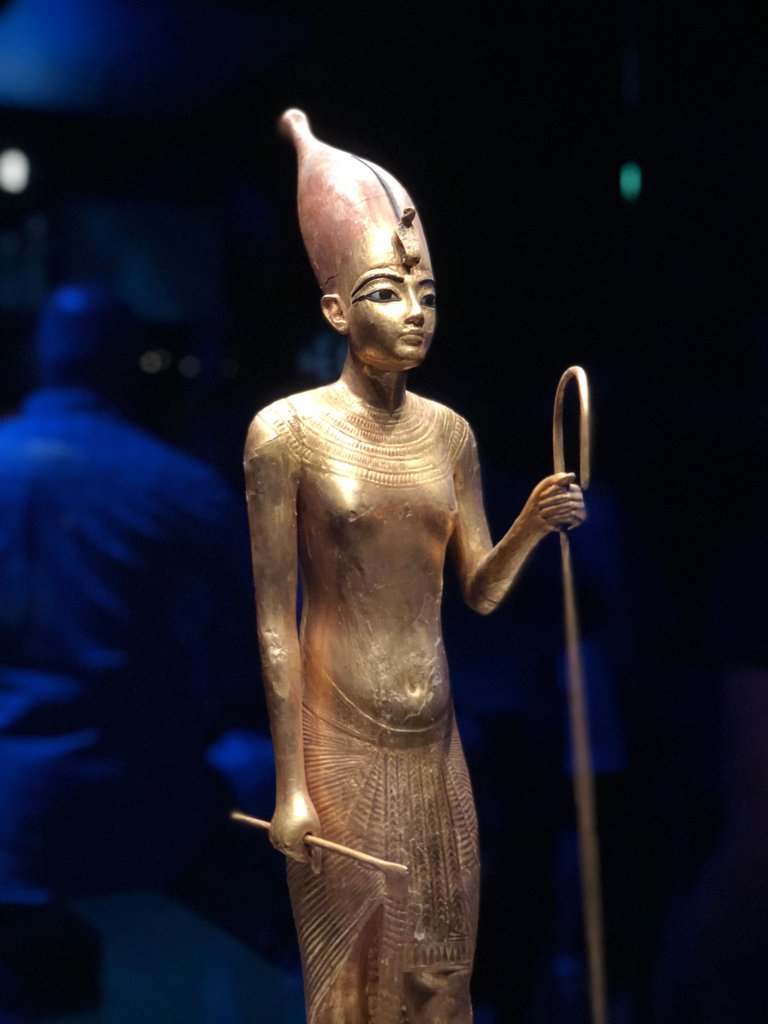
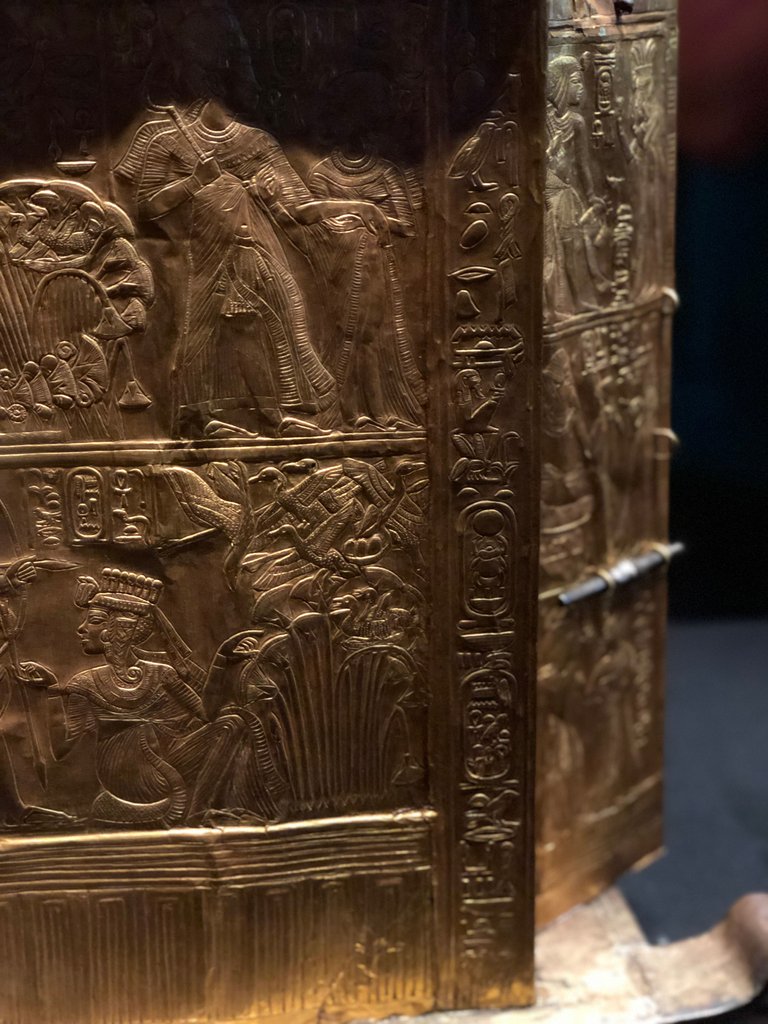
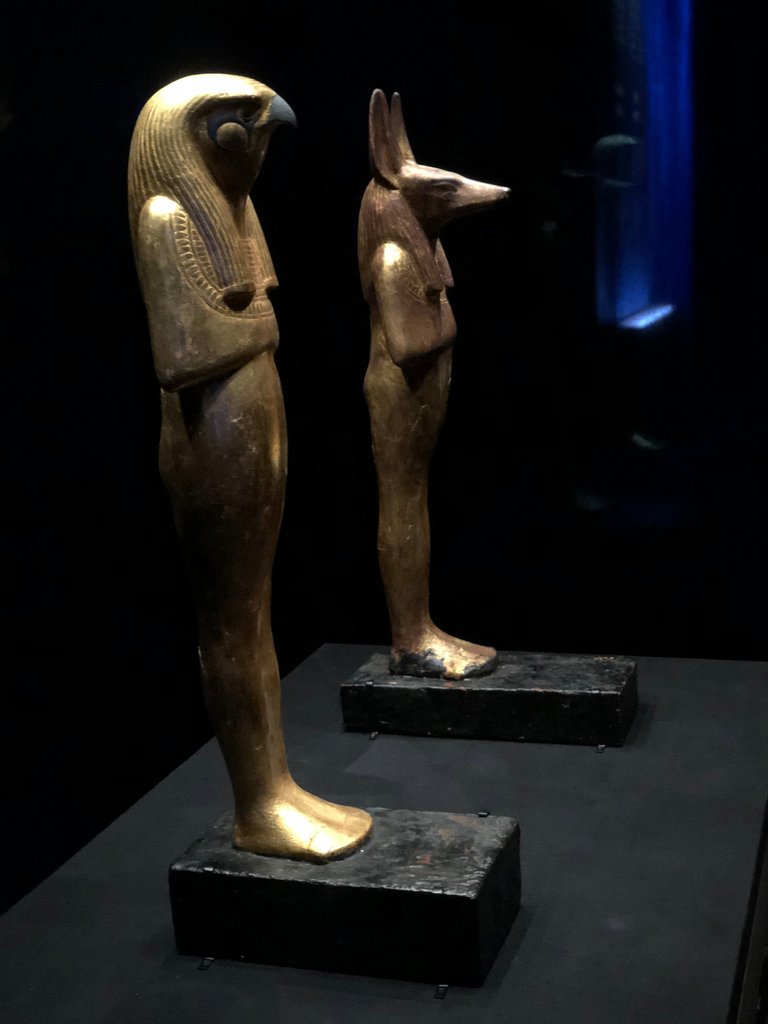
Statues of Ra and Anubis
While Ra with the eagle head was the god of the sun and known as creator of life, Anubis was the god of death who is associated with mummification and afterlife.
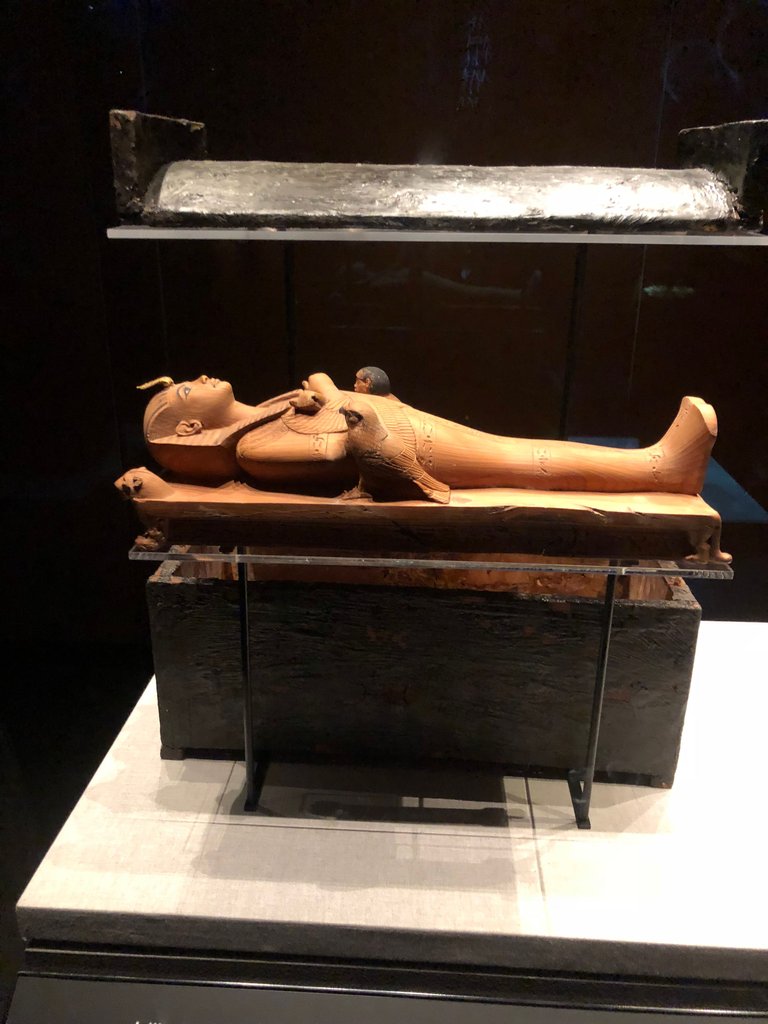
Wooden sarcophagus-shaped box with lid pegged on to the box for Osiride figure of Tutankhamun
For protection, Tutankhamun's mummy was secreted in a nest of coffins secured alongside a heavy granite sarcophagus.
Ancient Egyptian Jewelry
Tutankhamun was not only equipped with spiritual symbols and weapons for the afterlife, but also received the most costly and complex jewelry pieces with many exotic gemstones.

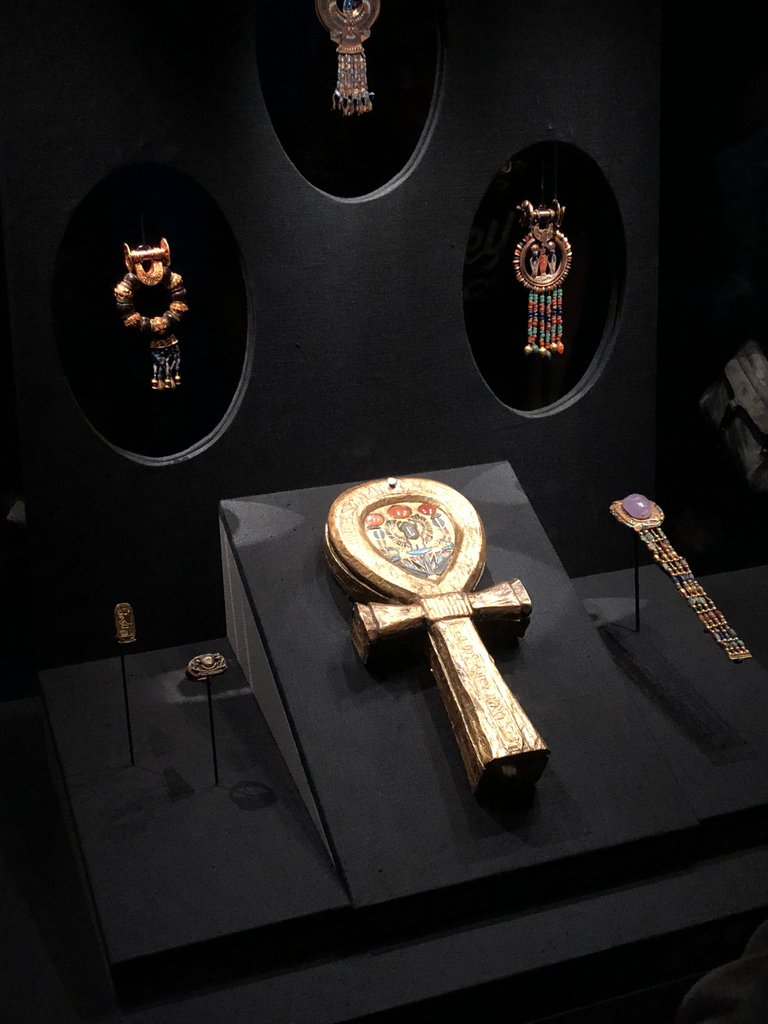
Top: 3 individual earrings featuring gold inlays, blue glass, carnelian, and carvings with Falcons and Symbols
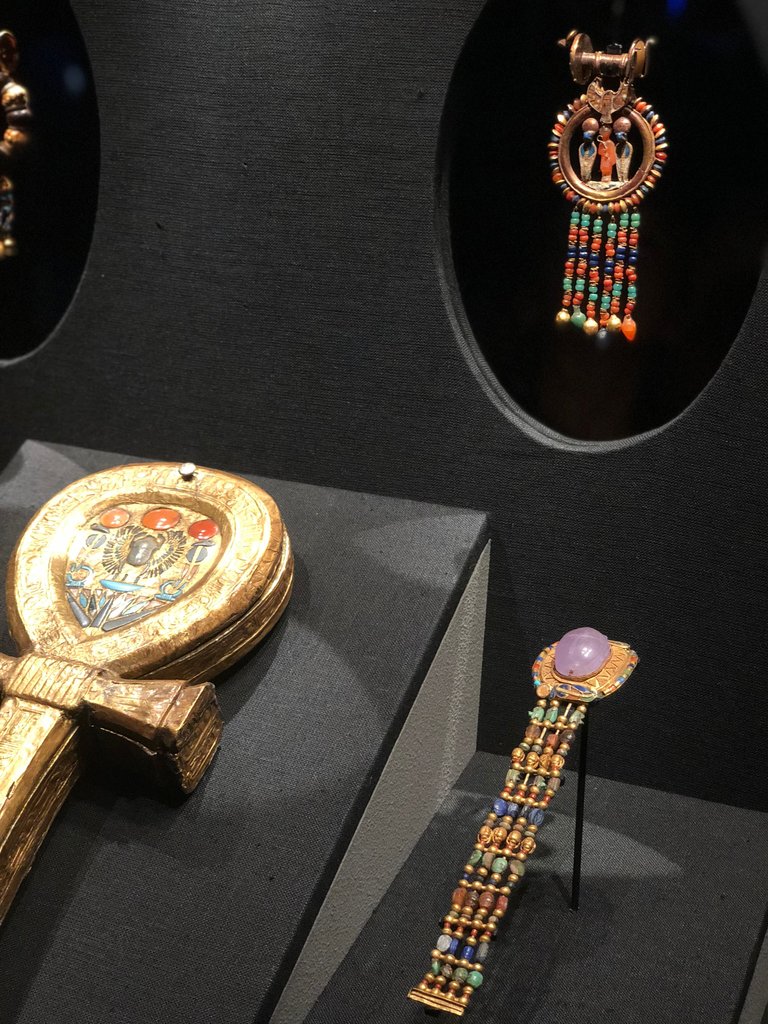
Middle: Wooden gilded mirror case in form of an Ankh, with Tutankhamun's name and scarabs
Right: Bracelet with Gold, Lapis, Carnelian and Amethyst Scarab Clasp
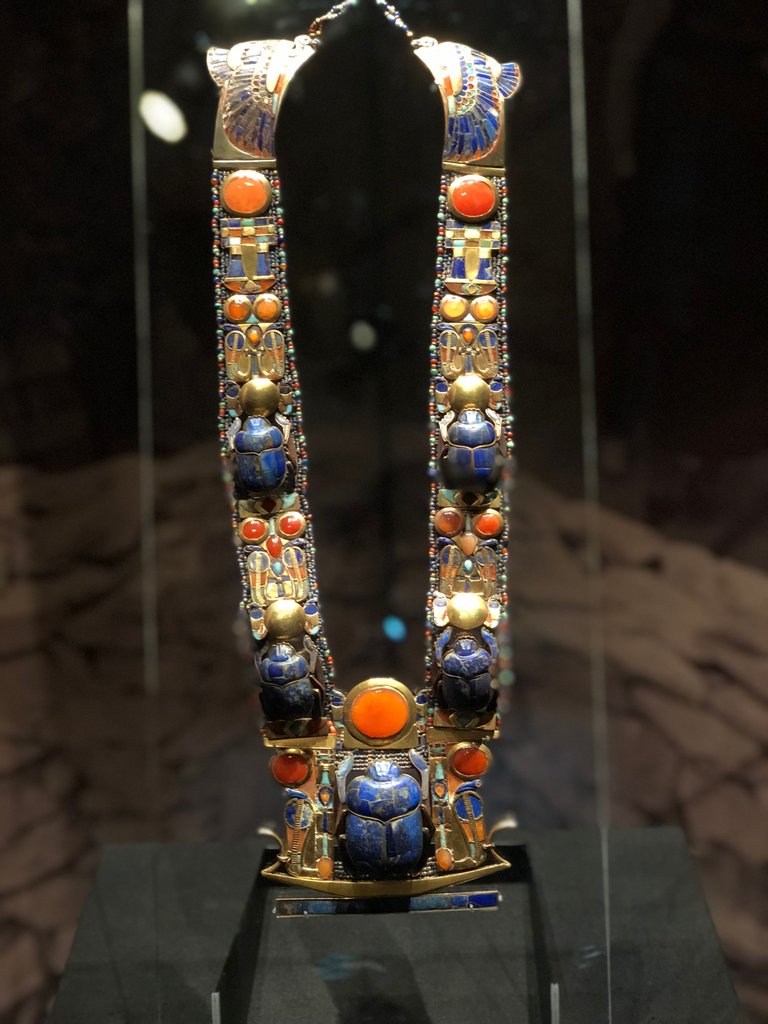
Gold inlaid pectoral with lapis lazuli scarabs
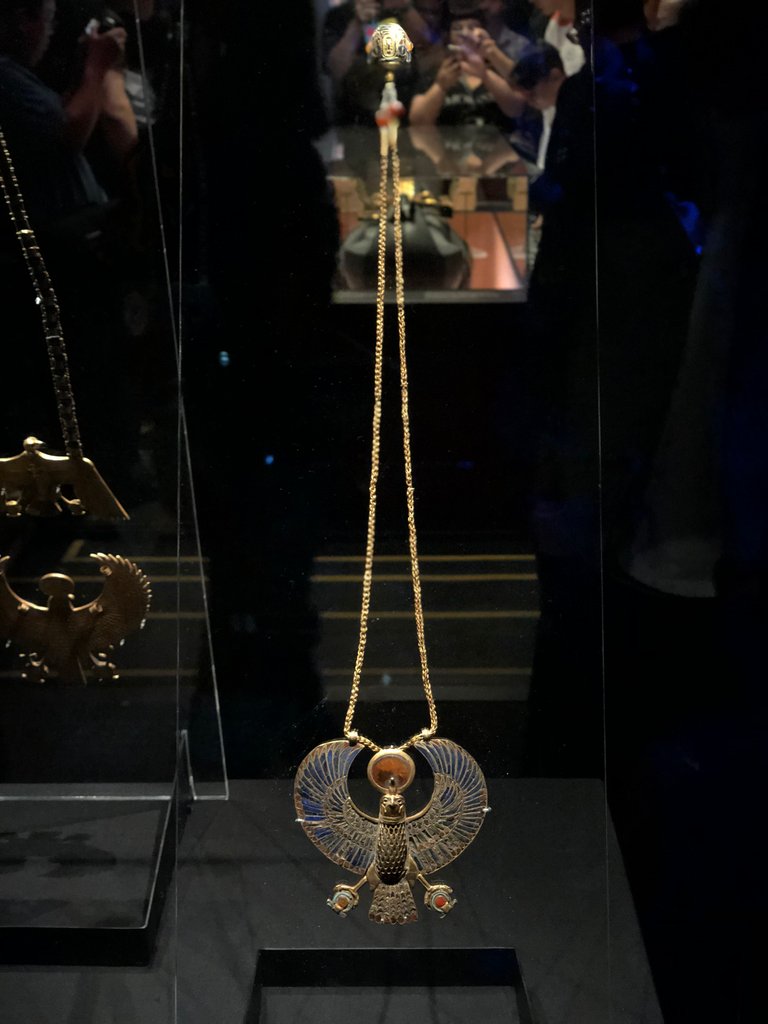
Gold Inlaid Falcon Pectoral with Oval Counterpoise and Gold chain
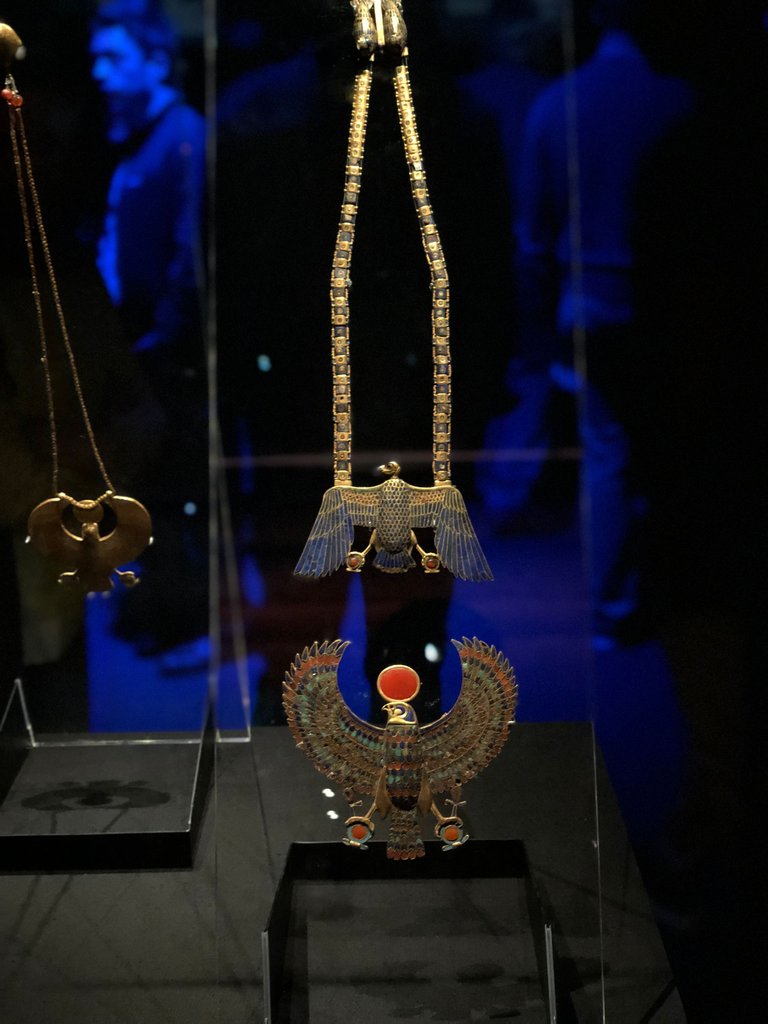
Gold Pectoral in the form of a Vulture with spread wings inlaid with Lapis, Carnelian and Glass
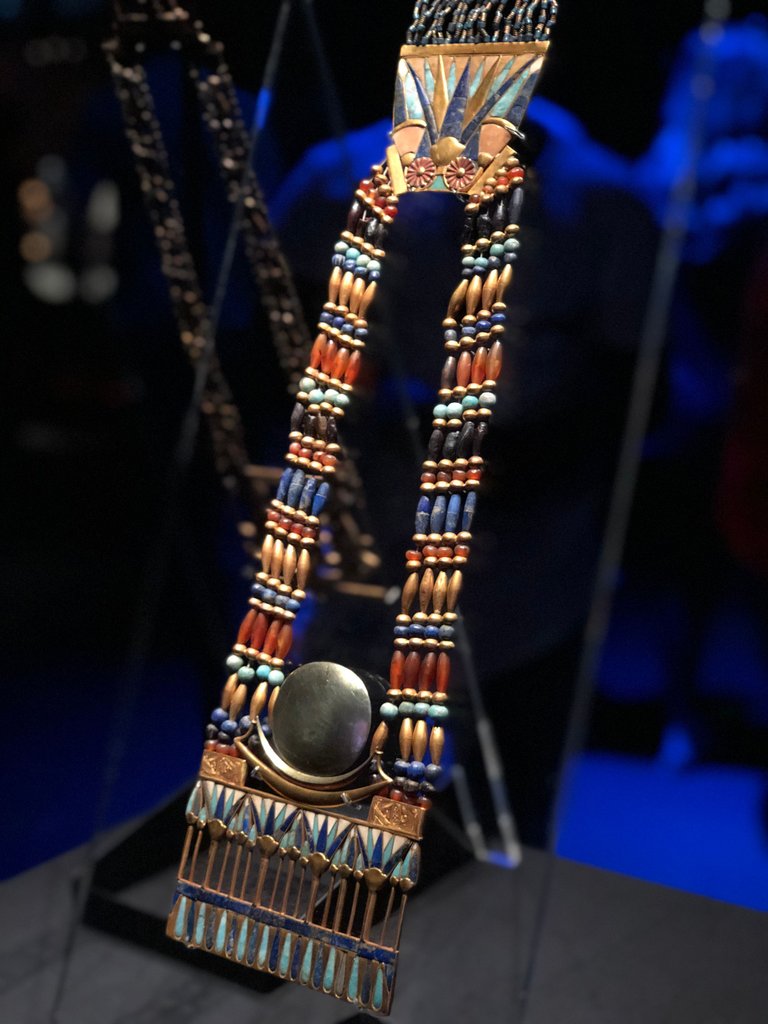
Pectoral of Tutankhamun in the form of a gold boat and silver solar disk with counterpoise and chain
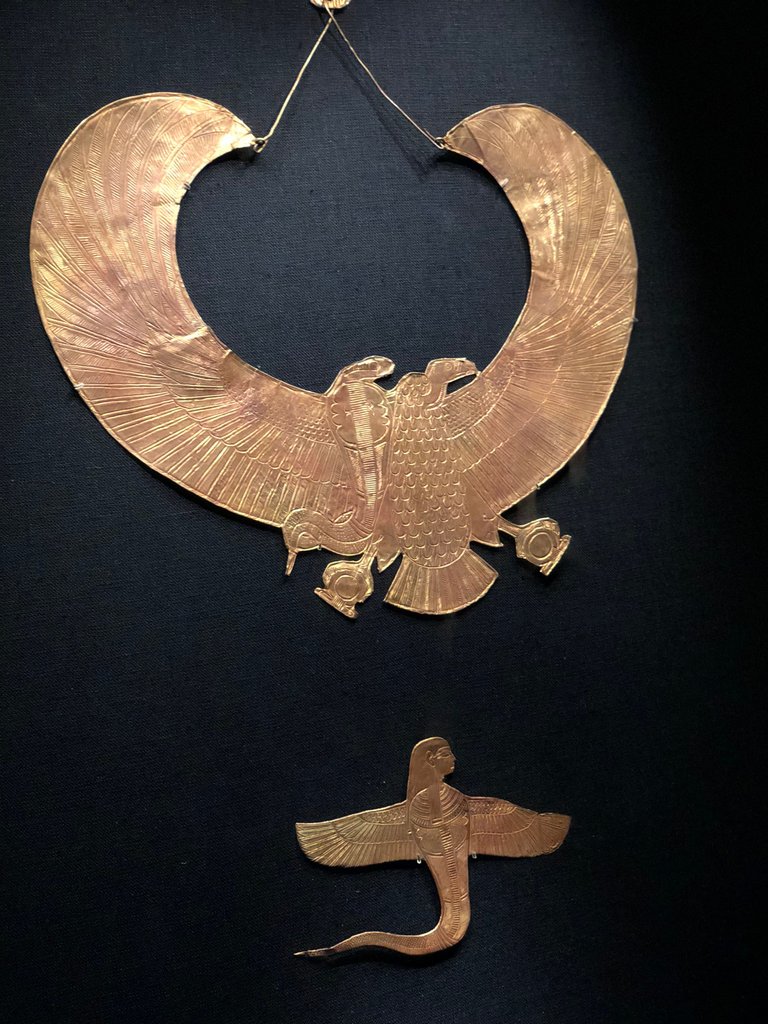
Gold Wesekh Collar: Vulture with spread wings & Uraeus (top), human-headed Uraeus with wings (bottom)
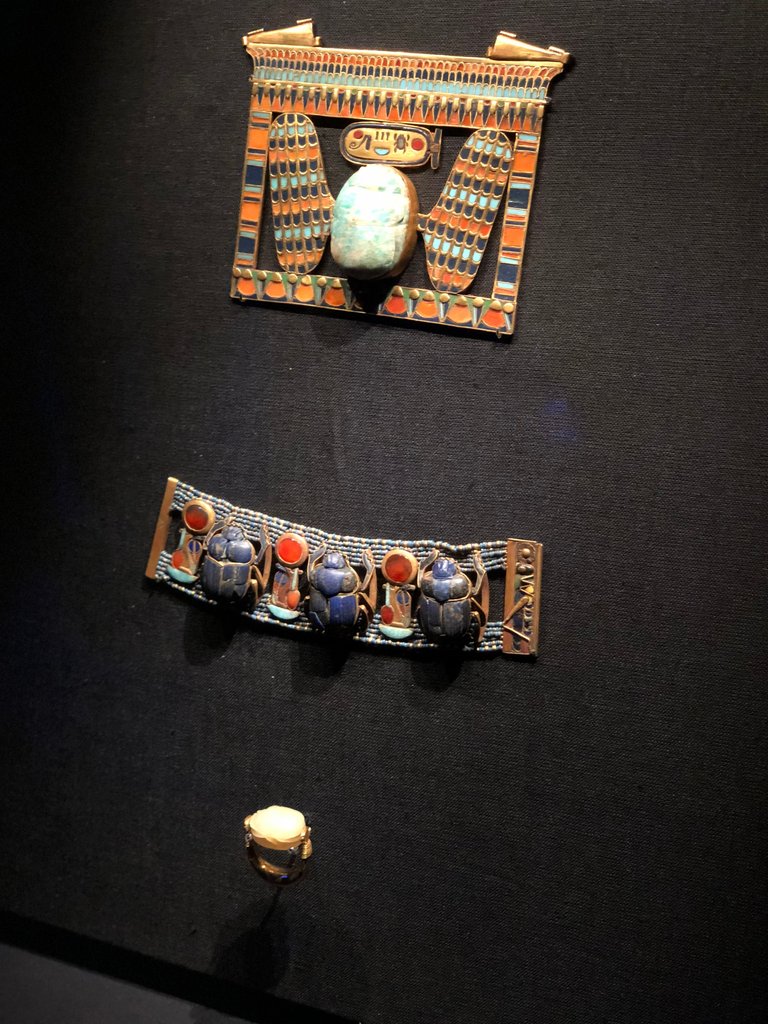
Gold inlaid pectoral of tutankhamun in the form of a naos with winged feldspar scarab (top), Bracelet with three lapis scarabs and cartouches of tutankhamun (middle)
Discovery of King Tut's tomb
In 1922, British scientist and archaeologist Howard Carter had already been excavating egyptian tombs for 3 decades.
People believed that the valley of the Kings, located across the river from ancient Thebes and near Luxor, had already been cleared and there were no more remains left to find.
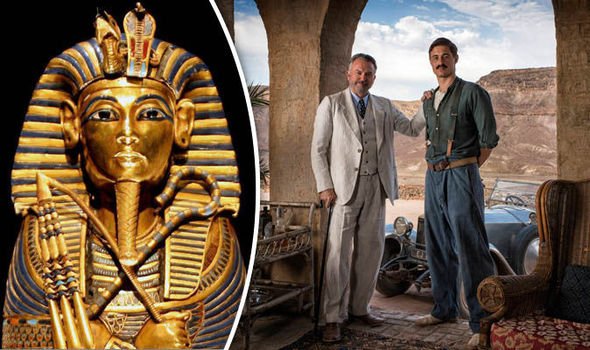
Carter was under financial pressure and desperate to find something - when an egyptian „water boy“ on his team accidentally discovered the entrance to the tomb by dropping some water bottles.
King Tut’s tomb was quite small for an ancient egyptian pharaoh because his death was so sudden - but the discovery of this tomb makes him forever famous and remains one of the biggest archaeological finds in history.
This can only leave us to imagine how the majestic tombs of the biggest Egyptian kings would have looked like!
King Tut's tomb inherited over 5,000 unique objects in 4 different rooms, from coffins to statues to jewelry, spiritual symbols, gemstones, weapons and more.
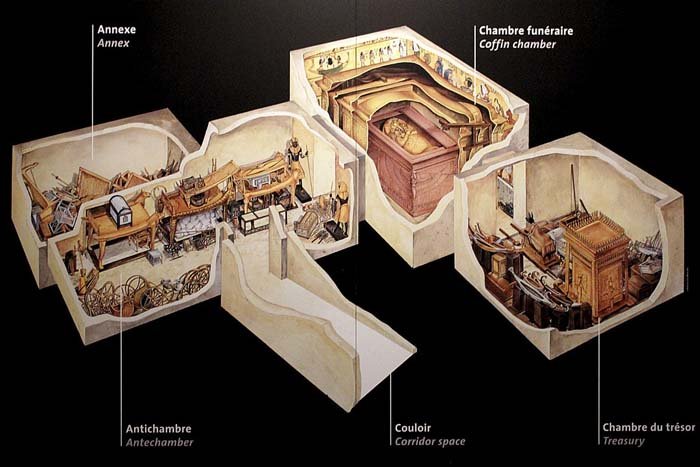

Which part of the exhibition did you find the most interesting? Have you ever seen any of King Tut's artifacts live?

© Sirwinchester

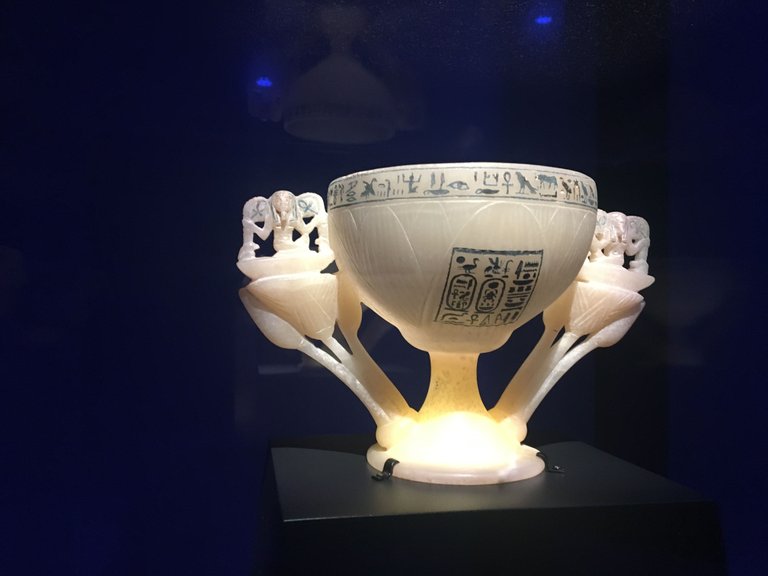
Thanks @sirwinchester for this really nice and interesting post!
Follow you, Upvoted and Resteemed!
Thank you, much appreciated! 🙏
amazing hystoric article about egypt
Thank you!
Nice ! Ancient Egypt are very mysterious civilization.
Yes. There is always something new to learn! So fascinating!
Wow ... class ...
Great post ..
I love the story .., especially the ancient ...
Cool!
Great photo!
🙌 thank you very much!
:)
Very interesting article. I did not find anywhere that Tutankhamun had a lame leg. An ancient Egypt always interests people.
Thank you! Glad you enjoyed it!
lucky you, would be cool to see it not having to fly to Egypt...
Learn something new everyday. Or learn 20 new things about old Egyptian culture, heh. Thanks for putting this all up.
I went to this exhibition when I was Philadelphia a few years back and fell in love with it. I love learning about new cultures and was able to watch the IMAX film prior to the exhibition. Your photos brought me back to the moments I had when I first saw the exhibit! Thanks for posting this!
Wow. This is some great stuff.
One of the places I would love to visit is Egypt since I love their statues and how the pyramids were built and everything about their history is just fascinating especially their art.
Thank you for sharing.
Hi,
I loved this article as I have always loved ancient Egypt and read all I can get about it. I didn't know about this tour! This is potentially a once in a lifetime opportunity, so I will google this tour and find out what cities are left. Thank you for the article and the tour information.
Take Care,
@shortsegments
Bellissime immagini! io amo la storia dell'antico Egitto. Complimenti!